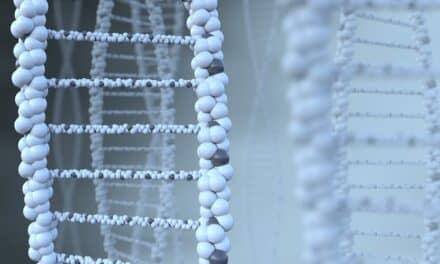FDA recently granted premarket notification (510(k)) clearance to Roche, Basel, Switzerland, for its new Cobas Cdiff test to detect Clostridium difficile in stool specimens.
The Cobas Cdiff test directly targets the toxin B gene found in toxigenic C. difficile strains in specimens from symptomatic patients. The accurate information provided by the test assists clinicians in making timely treatment decisions, and aids in preventing further infection in healthcare settings.
“Having the ability to provide a result quickly is important when supporting infection control for Clostridium difficile,” says Stephen A. Young, PhD, professor of pathology at the University of New Mexico School of Medicine and scientific director for microbiology and virology at TriCore Reference Laboratories, Albuquerque. “The Cobas 4800 system has the capability to allow for mixed batch testing of the Cobas Cdiff test alongside testing for methicillin-resistant Staphylococcus aureus, Staphylococcus aureus, and herpes simplex virus 1 and 2—all on one platform. We can run these assays together at least once in each shift rather than once a day, which can greatly improve laboratory efficiency, ultimately leading to better infection control and patient care.”
C. difficile is an anaerobic, toxin-producing microorganism known to cause severe diarrhea, pseudomembranous colitis, or toxic megacolon, in patients where normal bacterial flora of the gut has been altered following antibiotic therapy. Traditional methods for identification include toxigenic culture, which is labor-intensive and slow, and enzyme immunoassays (EIAs), which have limited sensitivity.1
To improve the sensitivity of individual assays, algorithms have been developed using combinations of culture and EIA testing for C. difficile toxins, or for the C. difficile-specific enzyme glutamate dehydrogenase antigen. Nucleic acid amplification tests provide sensitive and timely identification of patients with C. difficile infection, and exhibit better performance than EIAs.2
In a clinical trial program conducted at sites throughout the United States, the Cobas Cdiff test demonstrated excellent performance compared to direct and enrichment toxigenic culture. The test combines high assay sensitivity with rapid turnaround time and a minimum number of preanalytic steps to facilitate earlier intervention for patients suffering from C. difficile-associated disease. Earlier intervention can also lead to more effective implementation of infection control measures, which can prevent transmission to additional patients.
The Cobas 4800 system offers walkaway automation of nucleic acid purification, PCR set-up, and real-time PCR amplification and detection, to help laboratories achieve maximum efficiency. The expanding system menu in the US currently includes tests for methicillin-resistant Staphylococcus aureus, Staphylococcus aureus, Chlamydia trachomatis, Neisseria gonorrhoeae, human papillomavirus, BRAF V600 mutation test, EGFR mutation test, and KRAS mutation est. Herpes simplex virus testing on the Cobas 4800 system is not yet available in the United States; a 510(k) submission for that test is pending FDA clearance.
“With the addition of the Cobas Cdiff test to the Cobas 4800 system menu, Roche is able to expand the tools available to assist clinicians in the management of healthcare-associated infections,” says Paul Brown, head of Roche Molecular Diagnostics. “The Cobas Cdiff test requires less sample handling and provides laboratories with a simplified workflow, when compared to other molecular methods. It also delivers a lower inhibition rate, which means fewer repeat samples and chances for error, enabling better patient care.”
For further information, visit Roche.
REFERENCES
- Cohen SH, Gerding DN, Johnson S, et al. Clinical practice guidelines for Clostridium difficile infection in adults: 2010 update by the Society for Healthcare Epidemiology of America (SHEA) and the Infectious Diseases Society of America (IDSA). Infect Control Hosp Epidemiol. 2010;31(5):431–455; doi: 10.1086/651706.
- Carroll KC. Tests for the diagnosis of Clostridium difficile infection: the next generation. Anaerobe. 2011;17(4):170–174; doi: 10.1016/j.anaerobe.2011.01.002. Epub March 3, 2011.







